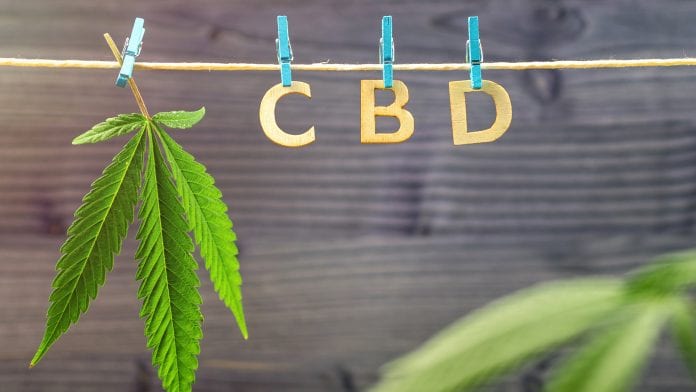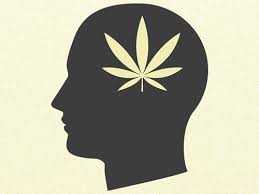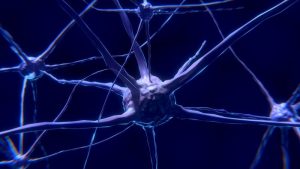Johns Hopkins University and the University of California, San Diego, analyzed search frequency for non-intoxicating CBD. The 2019 study revealed that search rates increased to 126% between 2016 and 2017, 160% next year, 118% the following year.
It shouldn’t surprise that there are millions of searches per month. Only 17 states have legalized marijuana somehow, with Illinois the latest. According to industry experts, New Jersey and New York are likely to follow their lead.
This interest is worth understanding the mechanism behind the compound’s effects and mechanisms.
What is CBD?
CBD stands for “cannabidiol” and can be found in cannabis plants. There are currently 113 cannabinoids that have been identified, and each plays a part in the endocannabinoid process. Two other types of cannabinoids are well-known: Tetrahydrocannabinol (THC) and cannabinol (CBN).
It is not a psychoactive compound. This means people don’t feel “high” after using it. The compound is revered for its many medical benefits, including Dravet syndrome treatment and Lennox–Gastaut syndrome treatment. The Food and Drug Administration (FDA) does not regulate the safety or purity of CBD, but CBD is safe.
Carbon dioxide extraction is the best way to obtain CBD. This method is expensive and uses carbon dioxide to separate oil from plant matter. Combining low temperatures and high pressure will maximize the amount of CBD extracted.
Extraction is the same as other methods. It involves the entire cannabis plant. The hemp plant’s stem, stalk, leaves, flowers, and compound can all be extracted by manufacturers. This compound has many benefits and influences the endocannabinoid systems.
What is the Endocannabinoid System (EBS)?
Complex biological systems are part of the human body’s endocannabinoid. Although medical researchers in the 1990s discovered it, it is still not fully understood. Experts know it has a significant impact on many major processes such as memory, appetite, mood, and sleep. However, there are still many unknowns.
Three components make up the endocannabinoid systems: enzymes, receptors and endocannabinoids. These components function regardless of whether CBD is used.
Here’s a quick overview of each component.
Receptors are found throughout the body and bind endocannabinoids to them.
There are many enzymes, but only two types can break down endocannabinoids.
Endocannabinoids are a complement to the body, keeping internal functions in check.
Understanding the effects of CBD requires that we examine the relationship between receptors and endocannabinoids.
CB1 receptors and CB2 receptors are the two main types. The CB1 receptors are located primarily in the central nervous systems and control coordination, movement and pain. They also regulate mood and memory. CB2 receptors can be found in the peripheral nervous systems and influence pain and inflammation.
The enzymes have broken down cannabinoids, and the endocannabinoids can bind to receptors. These receptors activate CBD, which is responsible for many of its health benefits. Researchers believe CBD cannot attach directly to the receptor but can influence it in some other way.
Non-cannabinoid receptors can also be affected by CBD. Teaera Roland of Lotus Health claims that CBD modulates the 5ht Serotonin receptor. This can be used to treat psychotic disorders. It can also affect TRPV1 receptors, responsible for pain and inflammation.
CBD has a positive effect on the body
CBD’s non-psychoactive qualities make it ideal to be used therapeutically. CBD can be used to treat multiple epilepsy forms. It is also useful for treating anxiety, stress, depression and other physical conditions. A lot of research supports these claims.
One study found that CBD can reduce the risk of heart disease, including strokes and heart attacks. A short-term study also found that patients who took CBD decreased appetite. Multiple studies have found a correlation between CBD and the treatment of PTSD symptoms like nightmares and negative memories.
CBD is also important in relieving pain. The TRPV1 is blocked from pain signals by CBD. This inference offers relief from pain, swelling, and discomfort.
Where can I find CBD?
All fifty states have CBD. Although CBD is still classified as marijuana by the federal government, it has been recognized as an integral part of the medical marijuana community. As it attempts to determine whether CBD comes from hemp or marijuana, the government’s position regarding CBD is unclear.
The 2018 Farm Bill is a pivotal turning point in CBD legality. According to federal law, a plant containing 0.3% or less THC will be considered ‘industrial hemp’ by the government. The government will consider the plant marijuana to exceed that level and limit its trade.
CBD products can be purchased online or in-person at retail shops. The majority of CBD is from Colorado, Oregon, Kentucky. Additional supplies are imported from overseas. If you haven’t purchased CBD before, it is worth looking at the source, ingredients, health claims, as well as forms.
The bottom line
One of the many cannabinoids found within cannabis plants is CBD. CBD has many benefits, including stress relief, anxiety, depression and pain management.
Although pure CBD is considered safe, the United States doesn’t regulate it all federal. The government doesn’t approve or confirm the purity of ingredients supplied by manufacturers. Regarding health benefits claims, the CBD industry is far ahead of scientific research.
Responsible CBD usage starts with understanding what CBD does to the body. Although there are many unknowns, CBD is an effective treatment.



